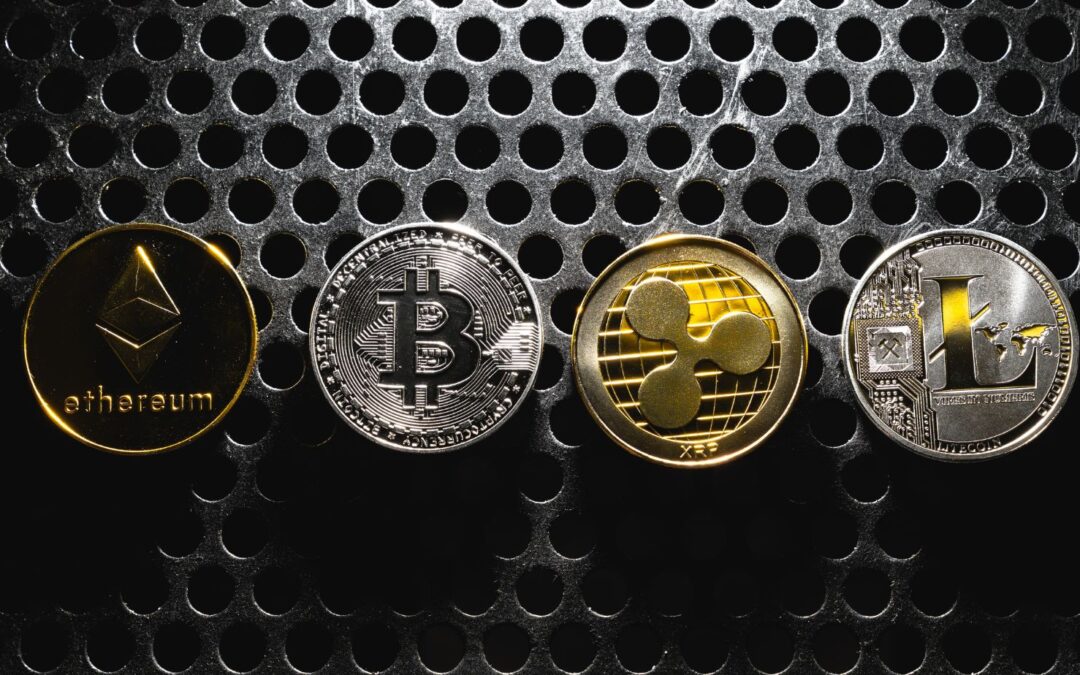Stablecoins serve as a crucial element in the cryptocurrency ecosystem by providing stability, increased liquidity, and a means for conducting secure transactions. Their role extends to facilitating seamless trading, serving as a store of value, and enabling various use cases such as payment solutions and decentralized finance (DeFi) applications.
Overview of Stablecoins
Imagine a type of cryptocurrency that does not wildly swing up and down in value but instead stays pretty much the same all the time. That’s the big idea behind stablecoins. These digital currencies are designed to stabilize the wild price swings often seen in the world of business2.community cryptocurrencies like Bitcoin and Ethereum. Rather than being subject to massive fluctuations, stablecoins aim to maintain a stable value.
There are different types of stablecoins out there, but most are pegged to a specific asset or a basket of assets, typically the US dollar or other fiat currencies. This pegging reduces price volatility and creates a more predictable, stable value compared to other cryptocurrencies.
The Purpose of Stablecoins
Stability is key as it makes stablecoins very attractive for various use cases, including trading, investing, and as a medium of exchange. Just think about it: Would you rather receive 1 Bitcoin as payment today or 1 stablecoin tomorrow, which is guaranteed to be worth the same amount?
It’s like choosing between taking your chances on a rollercoaster ride or opting for a smooth, leisurely drive on a straight highway. With stablecoins, there’s a lot less apprehension because their values don’t fluctuate as much.
In fact, by reducing price fluctuations, stablecoins make it much easier for businesses to use them for day-to-day transactions and financial planning.
Backing of Stablecoins
Stablecoins can be backed by different types of assets, such as fiat currency, commodities, cryptocurrencies, or even a combination of these. According to recent data statistics, approximately 82% of stablecoins are backed by fiat currency, providing a direct link to an underlying asset that contributes to their stability.
| Asset Type | Percentage |
| Fiat Currency | 82% |
| Commodities | 9% |
| Cryptocurrencies | 6% |
| Combination of Assets | 3% |
These figures reflect how strong and prevalent fiat-backed stablecoins are within the crypto market.
The Rationale Behind Stablecoins’ Popularity
Why are stablecoins so popular? Because they provide stability and increased usability within the cryptocurrency ecosystem. They offer a secure bridge between volatile digital assets and traditional financial systems. By doing so, stablecoins serve as invaluable tools for traders and investors who need to preserve their capital’s value while navigating through highly volatile markets.
So, when looking at stablecoins, it’s crystal clear why they have become such an integral part of the diverse crypto landscape. Their potential applications across trade settlements, remittances, decentralized finance (DeFi), e-commerce, gaming & virtual reality, investment, and more highlight just how far-reaching their impact has become in driving the adoption and evolution of the entire cryptocurrency ecosystem.
In shedding light on the central role and purpose of stablecoins within the cryptocurrency sphere, it’s now crucial to delve into understanding the major types that constitute this pivotal category.
Major Types of Stablecoins
Stablecoins are designed to provide price stability, and they achieve this in different ways. Here are the three major types:
Fiat-Collateralized Stablecoins
Let’s start with the most common type, fiat-collateralized stablecoins. These stablecoins are backed by reserves of fiat currency, such as the US dollar. This means that for every stablecoin issued, there is a corresponding amount of fiat currency held in reserve, ensuring its value remains stable and predictable.
The most well-known example of a fiat-collateralized stablecoin is USDT (Tether), which maintains a 1:1 peg with the US dollar. Similarly, USDC (USD Coin) also upholds a 1:1 peg with the US dollar.
Crypto-Collateralized Stablecoins
Moving on, we have crypto-collateralized stablecoins. These stablecoins are backed by other cryptocurrencies, allowing holders to earn interest by staking their crypto assets as collateral.

A prominent example of this type is MakerDAO’s DAI, which maintains its stability through over-collateralization using cryptocurrencies like Ethereum. Holders can lock up their Ethereum as collateral and generate DAI tokens based on the value of their locked assets.
Commodity-Collateralized Stablecoins
Lastly, we have commodity-collateralized stablecoins. These stablecoins are pegged to hard assets like gold or silver, providing stability linked to physical commodities. An example of this type of stablecoin is the Perth Mint Gold Token (PMGT), offering exposure to the price movements of real-world assets while leveraging the benefits of blockchain technology for efficient trading and transferability.
Each type of stablecoin has its own advantages and considerations, catering to different preferences and risk appetites within the crypto ecosystem. Understanding these distinctions can help investors and users make informed decisions when engaging with stablecoins and navigating the broader crypto landscape.
As we’ve seen, different stablecoins provide unique benefits to users based on their specific design and collateralization methods. Now, let’s explore how these stablecoins impact various aspects of cryptocurrency and financial ecosystems.
Importance of Stablecoins in Cryptocurrency
Stablecoins act as a stabilizing force in the volatile world of cryptocurrencies. Their significance lies in the multiple benefits they bring to the table, shaping the landscape of digital transactions and investments. Let’s explore why these coins are essential in the crypto realm.
Enhanced Usability and Accessibility
One of the key aspects where stablecoins shine is their usability. Unlike their more volatile counterparts like Bitcoin and Ethereum, stablecoins offer a steady value, making them more accessible for everyday use. Imagine using a currency that maintains its value relatively consistently, eliminating the fear of sudden price fluctuations. This inherent stability makes stablecoins perfect for not only regular transactions but also long-term holding and planning.
In essence, stablecoins function as a comfortable middle ground between regular fiat currencies and volatile digital assets, thus broadening the spectrum of financial options available to users. For instance, individuals or businesses can deploy stablecoins for remittances, cross-border payments, and even online purchases with the confidence that their value will remain relatively constant over time.
Facilitation of Decentralised Finance (DeFi)
The rise of decentralized finance (DeFi) owes much to stablecoins as well. DeFi presents an avenue where financial services are accessible to anyone with an internet connection while bypassing traditional intermediaries like banks. Stablecoins play a pivotal role in this domain by providing a reliable medium of exchange and giving users access to decentralized lending, borrowing, and trading platforms with far less exposure to volatility compared to non-stable digital assets.
Consider this scenario: A user is looking to take out a loan through a DeFi platform without involving traditional banking channels. Using stablecoins as collateral offers a level of confidence due to their value stability, significantly reducing the risks associated with volatile cryptocurrencies. This practical application underscores how these digital assets are instrumental in the ever-evolving DeFi ecosystem.
Mitigation of Risk
Stablecoins are indeed a beacon for risk mitigation within the crypto space. By offering a stable value pegged to established assets like fiat currencies or commodities, they act as a safeguard against abrupt depreciation and market instability. This function not only provides assurance during turbulent times within the broader cryptocurrency market but also promotes better risk management strategies for various industry participants.
For instance, traders and investors can utilize stablecoins as hedging tools to minimize their exposure to market fluctuations, particularly when navigating volatile price movements within traditional cryptocurrencies or other speculative assets. Moreover, sustainable growth in stablecoin adoption reaffirms their significance in mitigating risks across different aspects of the cryptocurrency ecosystem.
In summary, stablecoins bring an invaluable layer of stability and functionality to the dynamic world of cryptocurrencies. Their potential is far-reaching, unlocking new avenues for financial inclusion and innovation while instilling greater confidence in digital transactions and investments alike.
As we continue our exploration into the intricate world of cryptocurrency dynamics, let’s now shift our focus to understanding how stablecoins play a critical role in minimizing volatility and ensuring asset protection.
Stablecoins’ Role in Minimising Volatility and Asset Protection
In the ever-fluctuating realm of cryptocurrencies, stability is a coveted attribute. This is where stablecoins come into play. By being tethered to major fiat currencies or valuable assets, stablecoins offer a stabilizing force in an otherwise volatile environment. Imagine them as a safe harbor during a storm—when the seas get rough, investors can seek refuge in stablecoins, shielding their wealth from sudden depreciation and wild market swings.
These digital assets are designed to provide a temporary sanctuary for funds during turbulent market conditions. Picture this scenario: as the value of traditional cryptocurrencies experiences erratic fluctuations, traders can swiftly convert their volatile holdings into stablecoins to protect their portfolios from unexpected losses. This strategic move enables them to navigate through the treacherous waters of market instability with greater assurance, waiting for more favorable conditions to re-enter the game.
When implemented effectively, stablecoins act as a financial buffer, offering investors an opportunity to safeguard their capital from the capricious nature of the crypto market. Traditionally, when faced with sudden price corrections or market turbulence, investors encounter substantial risks and exposure to potential losses. However, by swiftly converting their assets into stablecoins, they create a form of financial insulation that shields them from the adverse effects of market volatility.
For instance, consider a scenario where a significant correction plagues the cryptocurrency market. During such periods of uncertainty and price erosion, investors can swiftly transition their crypto holdings into stablecoins. This maneuver allows them to sidestep potential losses and retain the value of their investments until the storm subsides. Similarly, in moments of heightened market volatility, traders can leverage stablecoins as a means to mitigate risks and preserve the integrity of their investment portfolio.
By understanding how stablecoins serve as a safety net during tumultuous market conditions, investors can proactively manage risk exposure and fortify their financial positions amid unpredictable market dynamics. This deliberate use of stablecoins not only acts as a proactive risk mitigation strategy but also underscores their instrumental role in preserving asset values amidst market turbulence.
As we unravel the multifaceted roles of stablecoins in the crypto ecosystem, let’s now direct our attention toward their significance in trading and investment strategies.
Stablecoins in Trading and Investment
When it comes to trading and investing in the ever-changing world of cryptocurrencies, stability is key. This is precisely where stablecoins come into play as game-changers. They allow traders to quickly move funds between different digital assets without the need to convert back and forth to traditional fiat currencies. This means traders can swiftly transition from one asset to another without having to cash out into fiat currency and then buy back in – effectively avoiding additional transaction fees and complexities often associated with traditional fiat currency transactions.
Additionally, stablecoins offer a level of predictability and assurance in an arena characterized by volatility. In other words, they provide a hedge against the roller-coaster nature of other cryptocurrencies. Imagine you’re on an unpredictable journey through cryptocurrency markets; now imagine that you have a stabilizing force by your side, ensuring that no matter how bumpy the ride gets, you won’t be thrown off course. That’s what stablecoins do for traders and investors. They act as a safe haven amid the chaos, providing a sense of security and dependable value compared to more volatile digital currencies.
For instance, Let’s say you’ve made some profit by trading cryptocurrencies, and you want to secure those earnings without converting them back to traditional money. This is where stablecoins shine! You can simply convert your profits into a stablecoin like USDC or USDT and rest easy knowing that their value won’t wildly fluctuate overnight due to market volatility.
Stablecoins provide stability in the face of uncertainty, allowing investors to extract their profits from a crypto investment into something tangible and stable.
Think of it as building a fortress of stability within the walls of cryptocurrency trading, offering sanctuary from the storms of market volatility.

Furthermore, there’s a growing trend of utilizing stablecoins’ potential to earn interest through lending or staking mechanisms. By depositing stablecoins into DeFi (Decentralised Finance) platforms, individuals have been able to earn significant returns on their holdings. This has opened up exciting avenues for generating passive income within the cryptocurrency space while minimizing exposure to high-risk assets prone to wild price swings.
In essence, stablecoins provide traders and investors with unparalleled flexibility, security, and opportunities for growth within the dynamic world of cryptocurrency trading and investment.
Now, let’s explore the evolving landscape of regulatory challenges faced by stablecoins and how they impact this critical component of the crypto ecosystem.
Regulatory Challenges Faced By Stablecoins
Stablecoins, with their promise of stability and reliability in the volatile cryptocurrency market, have attracted substantial attention from regulators and policymakers due to various concerns. Anti-money laundering (AML) compliance is a top concern. The anonymity and cross-border nature of cryptocurrencies pose challenges in detecting and preventing illicit financial activities. Regulators are particularly focused on ensuring that stablecoin issuers establish robust AML protocols, monitor transactions for suspicious activities, and comply with reporting requirements.
Additionally, there are apprehensions about the lack of transparency in reserve holdings. Unlike traditional financial institutions, many stablecoin issuers have not been subject to the same level of disclosure and scrutiny regarding the assets backing their stablecoins. This lack of transparency raises doubts about the liquidity and stability of these reserves, prompting calls for greater oversight and regulatory standards to ensure that stablecoin reserves match the outstanding supply of tokens.
Moreover, concerns over potential risks to financial stability have also prompted regulatory scrutiny. The rapid growth of stablecoin issuance and their integration into various financial services has raised questions about the systemic implications of a potential stablecoin market disruption. Regulators seek to establish frameworks to address the potential impact on financial stability, including stress testing, capital adequacy requirements, and resolution plans.
Regulatory clarity is crucial for establishing trust and broader adoption in the cryptocurrency ecosystem. Without clear guidelines and frameworks, market participants may face uncertainty, hindering innovation and investment in stablecoin projects. Therefore, regulatory initiatives aim to strike a balance between fostering innovation and safeguarding financial integrity.
Navigating through this landscape of regulatory challenges facing stablecoins highlights the multifaceted issues that policymakers must address with strategic measures to ensure a well-functioning cryptocurrency ecosystem.
The Future Growth of Stablecoins in the Crypto Ecosystem
Stablecoins are not just a passing trend in the crypto world; they are here to stay and likely to continue growing. One of the main reasons for this is their ability to address some of the key issues facing traditional finance, especially in areas of accessibility, efficiency, and cross-border payments.
Expanding Use Cases
Looking ahead, one of the most intriguing aspects of stablecoins is their expanding use cases. Initially designed as a digital representation of fiat currency, stablecoins have now evolved to serve various purposes within the broader crypto landscape. From facilitating peer-to-peer transactions and international remittances to serving as a gateway into decentralized finance (DeFi) applications, stablecoins have proven to be versatile instruments with multifaceted utility. As DeFi continues to gain traction, stablecoins are anticipated to play an even larger role, powering lending protocols, decentralized exchanges, and yield farming mechanisms.
Potential CBDC Integrations
Moreover, the potential integration of stablecoins with central bank digital currencies (CBDCs) poses an exciting opportunity for further growth. As several central banks explore the development of their digital currencies, the synergy between CBDCs and stablecoins could pave the way for seamless interoperability between traditional and digital finance systems. This integration could enhance the efficiency and transparency of cross-border transactions, potentially leading to more inclusive financial services globally.
Facilitating Cross-Border Payments and Financial Inclusion
In addition to expanding use cases and potential CBDC integrations, stablecoins are also well-positioned to play a pivotal role in facilitating cross-border payments and enhancing financial inclusion. Traditional methods of transferring money across borders often come with high costs and significant delays due to intermediaries. However, stablecoins offer a compelling alternative by enabling near-instantaneous settlements at significantly lower fees. This feature holds immense promise for individuals in underserved regions who lack access to efficient banking services, opening up avenues for greater financial inclusion and economic empowerment.
The evolving landscape of stablecoins presents a promising outlook for their continued growth and impact on the crypto ecosystem. As their utilization expands across diverse sectors and global regions, their role in fostering financial innovation and inclusivity is poised to be increasingly significant.
In closing, the rise and increasing versatility of stablecoins reflect a fundamental shift in the financial landscape, paving the way for a more inclusive and efficient global economy.
Our super author here at Famous Parenting and an absolute wealth of knowledge. She has studied many topics including creative writing, psychology and journalism but her real passion lies in raising her 3 children. Between working from home, homeschooling her youngest 2 children and navigating the world of teenagers she is a guru for parents.





